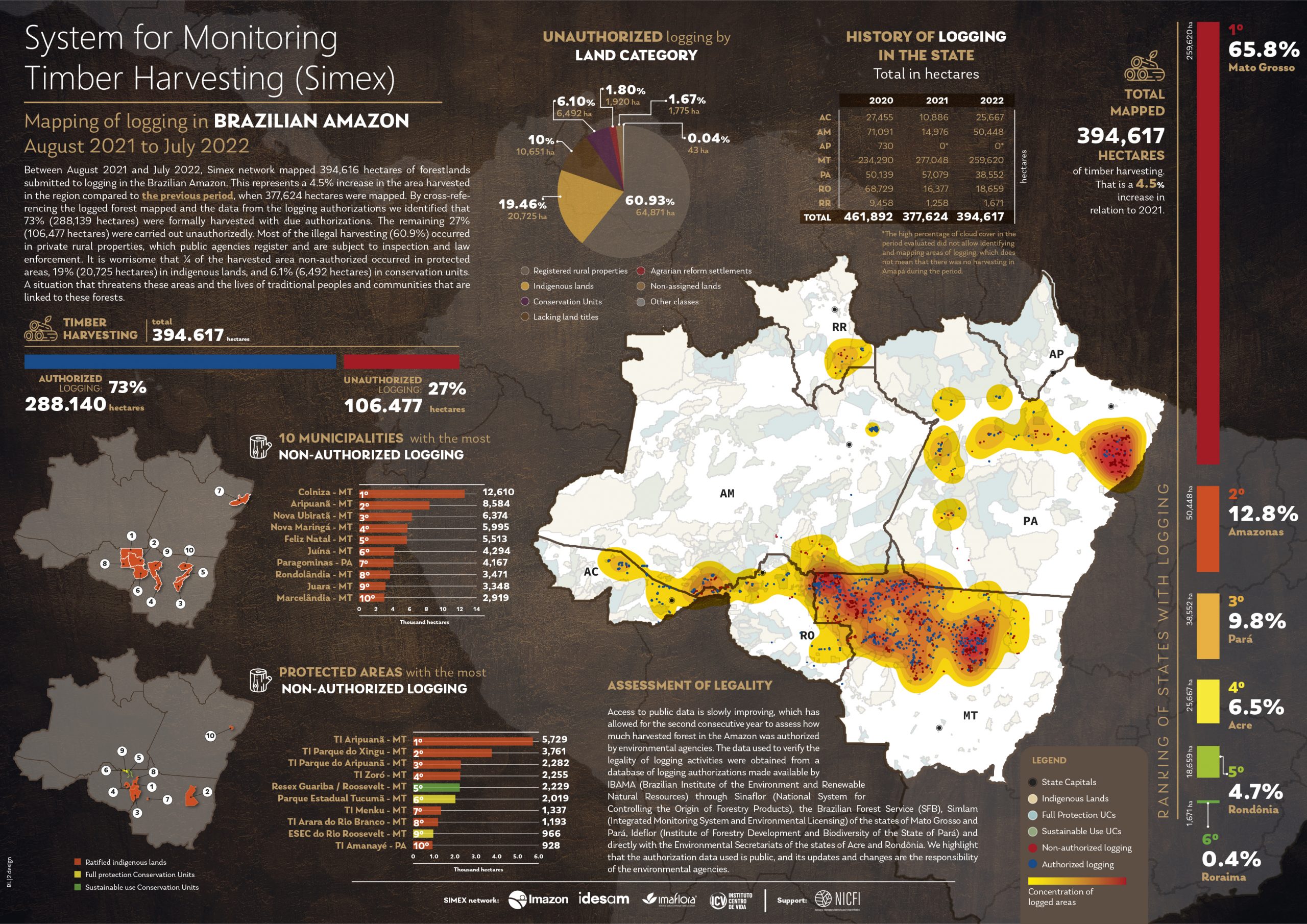Various authors. System for Monitoring Timber Harvesting (Simex): Mapping logging in brazilian Amazon – August 2021 to July 2022. Belém: Imazon, Idesam, Imaflora e ICV.
Between August 2021 and July 2022, Simex network mapped 394,616 hectares of forestlands submitted to logging in the Brazilian Amazon. This represents a 4.5% increase in the area harvested in the region compared to the previous period, when 377,624 hectares were mapped. By cross-referencing the logged forest mapped and the data from the logging authorizations we identified that 73% (288,139 hectares) were formally harvested with due authorizations. The remaining 27% (106,477 hectares) were carried out unauthorizedly. Most of the illegal harvesting (60.9%) occurred in private rural properties, which public agencies register and are subject to inspection and law enforcement. It is worrisome that ¼ of the harvested area non-authorized occurred in protected areas, 19% (20,725 hectares) in indigenous lands, and 6.1% (6,492 hectares) in conservation units. A situation that threatens these areas and the lives of traditional peoples and communities that are
linked to these forests
ASSESSMENT OF LEGALITY
Access to public data is slowly improving, which has allowed for the second consecutive year to assess how much harvested forest in the Amazon was authorized by environmental agencies. The data used to verify the legality of logging activities were obtained from a database of logging authorizations made available by IBAMA (Brazilian Institute of the Environment and Renewable Natural Resources) through Sinaflor (National System for Controlling the Origin of Forestry Products), the Brazilian Forest Service (SFB), Simlam (Integrated Monitoring System and Environmental Licensing) of the states of Mato Grosso and Pará, Ideflor (Institute of Forestry Development and Biodiversity of the State of Pará) and directly with the Environmental Secretariats of the states of Acre and Rondônia. We highlight that the authorization data used is public, and its updates and changes are the responsibility of the environmental agencies.

